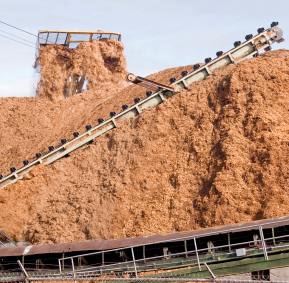|
|
|
WE'VE MOVED! |
2009 has been quite a year. Despite the challenges brought about by the condition of the housing market and the broader recession, we've continued to focus on serving our customers and readers. As a result, we kept busy in 2009. We added a bioenergy practice and this newsletter. We launched a new website and a new lumber pricing product. We even expanded our staff.
Now, as the holidays approach, we are undergoing one more change--a change in address. In order to accommodate our growth, we moved to a new office in South Charlotte two weeks ago.
Our contact information is:
14045 Ballantyne Corporate Place
Suite 150
Charlotte, NC 28277-2845
Phone: (704) 540-1440
Fax: (704) 540-6301
If you're in the Ballantyne area, stop by and visit us. And don't worry if you forget the new contact information. Our mail, calls and faxes will be transferred to our new location automatically.
Now, as the year draws to an end, we would like to thank you for your business. We genuinely appreciate it, and we look forward to serving you in the new year.
Happy Holidays, everyone. |
 |
1Q2010 FUNDING FOR BCAP RAISES CONCERNS |
 Delay in Releasing Rules Results Delay in Releasing Rules Results
Just like the list of qualified biomass conversion facilities, the cost of the BCAP program has exploded: funding for the first quarter of 2010 has been reported at $500 million dollars. Why so high? The 2008 Farm Bill did not set a specific limit for funding the program. Instead, to determine the funding level for 1Q2010, the Farm Service Agency (FSA) added up the quarterly feedstock needs of all facilities that have qualified as biomass conversion facilities (BCFs). They then requested that amount from the Credit Commodity Corporation (CCC). The CCC apparently approved the request, and the controversy quickly followed.
Among the first to object following the announcement was the Composite Panel Association (CPA). The group asked the Office of Management and Budget (OMB) to review the program's funding and rules. Their concern? Included in the eligible materials list are classes of wood fiber already used for higher value products, specifically the composite wood panels used in home construction, furniture, cabinets, doors, and flooring. More... |
 |
SCIENCE AND POLITICS |
|
Will Classifying Wood as Carbon Neutral Lead to Land Use Changes?
There is a paradox inherent in producing energy by burning wood in order to slow global warming. On one hand, wood does have a better emissions profile than fossil fuels. On the other hand, harvesting wood reduces the amount of carbon sequestered in forests. Because of this paradox, significant controversy arises whenever the carbon footprint of wood bioenergy is discussed.
Currently, the Kyoto Protocol, the European Union's cap and trade legislation and the proposed (though far from law) American Clean Energy and Security Act of 2009 all classify bioenergy as carbon neutral. An article in a late October issue of Science called this classification into question.
|
 |
IS CELLULOSIC ETHANOL BACK ON TRACK? |
|
After a long year in which cellulosic ethanol seemed to be fading from the renewable energy scene, there has been an uptick in activity this month.
First, was the announcement by the Department of Energy that it had awarded grants totaling $564 million to 19 biorefineries. The final 19 were chosen from a group of 200 applicants. And this selectivity has many who received the grants hoping that the government's vote of confidence in their technologies will spur investor interest and help them raise additional funds.
Eleven of these facilities use wood as all or part of their feedstock.
| |
|
|
|